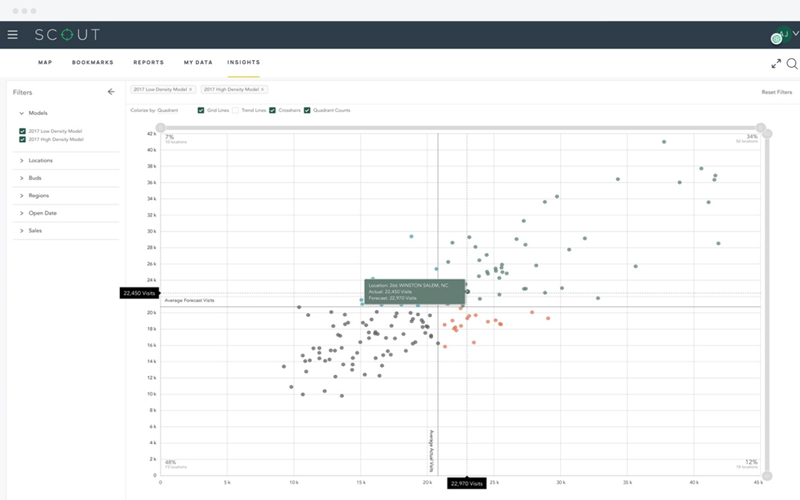The Importance of a Portfolio Audit
To create a successful growth strategy, you first need to maximize the performance of your existing facilities. A portfolio audit can help with this process by providing an unbiased, data-driven assessment of your existing facilities, which takes the guesswork out of the process. This way, you’ll know exactly which locations need more support, which need to be studied, and which can be expanded.
Here’s how a portfolio audit works.
Consumer Profile
The first step with any portfolio audit is a consumer profile. Also known as a patient profile, a consumer profile studies your patients as consumers and goes beyond age, ethnicity, and other demographic data. By incorporating insights from behavioral and lifestyle data – or psychographics – you’ll have a deeper understanding of both who and where your most valuable consumers are.
Once you’ve determined this, it’ll be easy to see which facilities have a high concentration of those types of consumers in their trade areas, and which ones don’t. This is an important step when assessing your facilities.
Site Score Models
The next part of this process is to develop a site score model. This analysis combines the insights from your consumer profile with service line demand, competition, area draw, and other variables to create a model that allows you to evaluate new locations.
But when used to evaluate your current network of facilities, these models provide important insights into how each of your facilities should perform based on the available data.
Portfolio Audit
This brings us to the last step – the portfolio audit. This process takes the results from the site score models and compares them to actual performance metrics from your existing locations. This will help you pinpoint where your opportunities and challenges lie.

Looking at the example above, the x-axis shows forecasted performance, while the y-axis is the actual performance. Each dot represents a different location in your network.
If the audit projects high performance, but the actual metrics show low performance (like in the bottom right quadrant), something isn’t working at the facility and needs to be adjusted. Conversely, if the model projects low performance, but the facility is doing great (like in the top left quadrant), then your health system has an opportunity to study that location and figure out why that is.
If a facility falls in the top right quadrant with high projected performance and high actual performance—great! That location is doing well. On the other hand, if a facility falls in the bottom left quadrant with low actual and projected performance, there might be an opportunity to relocate or close that facility.
By comparing your site score to actual facility performance with the help of a portfolio audit, you can see how your locations are actually doing and where there’s room for improvement.
The Bottom Line
To fully understand your opportunities, you must first understand your current situation. Combining analytics with traditional analyses to inform your decisions is the key to optimizing your facility network for future success.
Learn more by clicking here to visit our portfolio audit solutions.


